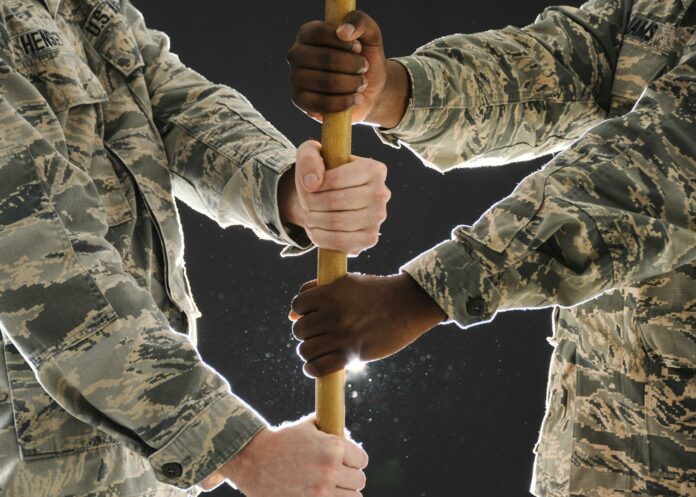For me, the city of Srebrenica represents a personal duty, an eternal command that will remain until my time on this earth ends. Just three years had passed since the Srebrenica massacre when, in 1998, fate and duty called me to Sarajevo, the capital of Bosnia and Herzegovina, alongside my husband. We set off for our post in a military convoy, crossing the Sava River on a military-controlled pontoon bridge at Slavonski Brod, and continued our journey through the newly formed Republika Srpska. The 70-kilometer stretch was completely desolate, with no signs of human life except in the war-torn town of Derventa. Only rows of bombed-out, shelled houses lined the road, from which the Croats had fled. This is what ethnic cleansing looks like in practice. My five-year assignment was a grueling immersion into the hell of war, in the otherwise peaceful Balkans, at the edge of Europe. Although the killing had ceased, and the Dayton Agreement had officially ended the conflict on paper, the traumas it caused would take a lifetime to heal.
I was shocked by the bullet-riddled streets of the city center, the “roses” made of glass shards, and the sight of the collapsed headquarters of the legendary daily newspaper Oslobođenje. But all of this was nothing compared to what had burned into the retinas and nervous systems of the locals. Constant fear, personal tragedies, unforgivable betrayals, and vile pacts hovered over everyday life, while everyone tried to survive somehow, because that is the command of life. The story of Srebrenica, the Silver City, however, stood above all this: it reached a new level of horror, one that must forever be shown to the heavens as a sign to ensure that what happened there never happens again.
After the disintegration of Yugoslavia, Bosnia and Herzegovina hurriedly declared its independence in 1991, followed by a referendum on the matter. The Bosnian Serbs strongly opposed the move, declared the Republika Srpska in response, boycotted the referendum, and rising tensions eventually sparked the war. The Bosnian Serb forces, with the support of Slobodan Milosevic’s Serbian government, attacked the fledgling Republic of Bosnia and Herzegovina. The plan was to create an ethnically pure Serbian entity in areas already under Serbian control. They largely succeeded in two blocs, in the southwest and northeast, with the crucial corridor in the middle, centering on Srebrenica. This county seat, located 76 kilometers northeast of Sarajevo, was previously famous for its gold and silver mines and had a significant Muslim population. From 1993 onwards, it came under constant attack during the war, and the untenable situation prompted the UN to establish a safe zone in the Drina River region, with Srebrenica at its center. The enclave’s creation was followed by two years of relative calm, fueled by latent tensions, but the city and its surroundings remained a vulnerable island in Serbian-controlled territory. Both sides continuously violated the agreement, and the UNPROFOR soldiers stationed there turned a blind eye to the incidents. A slow genocide began, with Bosnian Muslims fleeing the area and crowding into the city under inhumane conditions, with little food, water, or medicine. The Bosnian Serbs’ intentions remained unchanged. To illustrate, Ratko Mladic, commander of the Bosnian Serb Army, later stated before the International Criminal Tribunal for the former Yugoslavia: “People are not small stones or keys in your pocket that you can move from one place to another. Therefore, we cannot organize it precisely so that only Serbs remain in one place, while the others are painlessly removed. I don’t know how Mr. Krajisnik and Mr. Karadzic will explain this to the world. This is genocide.” The two individuals mentioned were the highest-ranking Bosnian politicians accused of genocide, both later convicted.
On July 11, 1995, Serbian military units captured Srebrenica before the eyes of 370 Dutch soldiers stationed there, who did nothing to prevent it. This has been seen before, “in good faith” they did not believe that what happened would actually happen. This, of course, did not absolve the peacekeepers, who were later condemned by the Dutch Supreme Court and international public opinion, albeit somewhat reluctantly. In the following weeks, the Serbs systematically killed 8,700 Muslim boys and men and raped 20,000 women and girls. I have read chilling military statements about the cold-blooded machinery: it requires planning and high-level coordination to liquidate so many innocent victims in a matter of days or weeks, and then bury them in mass graves.
I met mothers from Srebrenica. They have organized themselves to make their voices heard more strongly and to ensure that the world does not cover what happened to them with the negligent veil of forgetfulness. The Federal Commission for Missing Persons of Bosnia and Herzegovina was also established to aid in the search. Now, 29 years after the tragedy, only 8,372 victims have been identified and buried. Every year on July 11, a pilgrimage to the Silver City, to the memorial site at the Potocari Cemetery, takes place. A peace march also retraces the path of the fleeing, commemorating the genocide in Srebrenica, something that can never be forgotten in Bosnia. In this quiet grief, I share a part, feeling the pain that a wife, a sister, or a mother who identified her 14-year-old son in four different mass graves might feel. Never again – this is the eternal command for every responsible, honorable person – but it would be good if the world acknowledged this too. I stubbornly believe that good will eventually prevail. Until then, I pray for forgiveness and reconciliation, even in Srebrenica.
Gyöngyi Kiss

